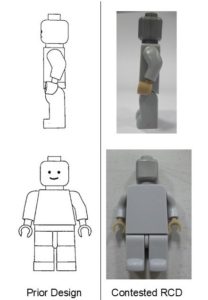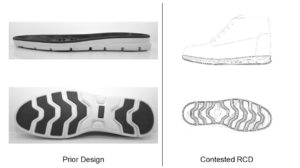09/10/2019
Scenario
Your company has designed a new product that has a distinctive shape and/or appearance. You’re confident that this new product will be very successful in the EU and you want to launch the product without the risk of infringing another party’s intellectual property rights. You conduct a search of the EUIPO’s design register and discover an existing Registered Community Design (RCD) which is in force and covers a design having a similar appearance to your new product. The RCD owner may have the right to prevent you from being able to sell your product throughout the whole of the EU, including in the UK after Brexit.
What can you do?
One option is to design around the earlier registered design to avoid infringing it.
Another option is to seek a declaration that the registered Community design is invalid. The EUIPO’s invalidity procedure is a relatively quick way of removing an RCD from the design register in order, which can help you to clear the way for commercialisation of a new product in Europe.
In order for an registered Community design to be valid, the design shown in the RCD must be novel over all prior designs that have been made available to the public before the earliest filing date of the RCD application. The design in a valid RCD must also have individual character. This means that the design must produce a different overall impression on an informed user compared to all designs that have been made available the public prior to the earliest filing date.
The EUIPO, however, does not examine registered Community design applications for novelty or individual character at the registration stage. The EUIPO instead only carries out a formalities examination, which, amongst other things, ensures that the images of the design are sufficiently clear and are consistent with one another. The EUIPO’s examination procedure results in lower filing and prosecution costs, and it allows an RCD application to proceed to grant very quickly (sometimes in just a few days). However, the EUIPO’s examination procedure does leave open the question of whether an RCD was validly registered and it means that a proportion of RCDs on the register may be invalid.
Consequently, the EUIPO provides a mechanism that allows for filing of application to invalidate a registered Community design. In other words, the EUIPO leaves it to you to question whether an RCD meets the requirements for registration by offering a mechanism for challenging it. An invalidity action is an administrative proceeding before the EUIPO, not litigation before the Courts (though invalidity is also a common counterclaim in a defence to infringement proceedings). If an RCD is invalidated, it is removed from the register and is no longer enforceable. An invalidated RCD is treated as if it was never registered and so never had any legal effect.
Example 1 – A successful invalidity action

A comparison of a prior design (left) with a contested registered Community design (right) in which the application for a declaration of invalidity was successful and the RCD was declared to be invalid – i.e. the design registration on the right was considered never to have had legal effect; Invalidity Case No. 106320; LEGO Juris A/S against Filip i S-ka “Dromader” Spółka Jawna; 6 September 2019.
Benefits of challenging a registered Community design
There are many advantages to invalidating an existing RCD that protects a design that has a similar appearance to your new product. The most obvious advantage is that, if your invalidity action is successful, the problem RCD will be removed from the design register and it can no longer be used to stop you selling your new product in the EU. In other words, an invalidity action can help you to “clear the way”. There are also advantages in invalidating RCDs that show designs that are similar to your existing products. For example, RCDs can cause particular issues on websites such as Amazon and eBay, where a potentially invalid RCD can be used to take-down apparently infringing products. Invalidating any problem RCDs before they are asserted against you (i.e. before they can even become a problem) reduces the risk of your products being removed from sale.
What are the grounds of attack?
Many registered Community design invalidity actions are based on a lack of novelty or a lack of individual character. However, an invalidity action can in fact be based on any one or a combination of the following grounds for invalidity:
- Not a design (E.g. the design shown is a graphical representation of nature, a living organism in its natural state, or a method of use);
- Lack of novelty;
- Lack of individual character;
- The appearance of the design is solely dictated by its technical function;
- The design is dictated by the form and dimensions of another product;
- The design is contrary to public policy or morality;
- Lack of entitlement;
- Conflict with a prior design right that was published after the filing date of the design; or
- The design subsists in the use of a third party’s earlier copyrighted work.
Example 2 – A failed invalidity action 
A comparison of a prior design (left) with a contested registered Community design (right) in which the application for a declaration of invalidity was rejected – i.e. the design on the right is new and has individual character over the one on the left; Invalidity Case No. 11208; TBL Licensing LLC against Vapesol; 14 August 2019.
How is the invalidity action handled?
The EUIPO sends a copy of the application for invalidity to the registered Community design owner and there are rounds of correspondence between the parties involved. An invalidity action before the EUIPO comes to an end when either: both parties decide terminate the proceedings (for example if the parties have reached an amicable settlement); the invalidity applicant withdraws the invalidity application; the RCD owner surrenders the RCD; or the EUIPO issues a final decision based on the information provided.
What’s the cost penalty if you don’t succeed?
The EUIPO will award costs to the winning party of an invalidity action. If the registered Community design is not declared invalid then the invalidity applicant must pay costs to the RCD owner, typically €400. If the RCD is declared invalid then the RCD owner must pay costs to the invalidity applicant, which are typically €750.
Can an invalidity decision be challenged?
Any party has the right to appeal against an EUIPO decision that affects them adversely. An appeal against an invalidity action decision is heard before the Boards of Appeal. The decision by the Boards of Appeal can itself be appealed before the EU’s General Court. General Court decisions can also be appealed all the way to the Court of Justice of the EU, but only on points of law.
How we can help
At Reddie & Grose, we can advise on identifying relevant registered Community designs, whether there is a risk of infringement, and strategies to mitigate that risk. We can also assist you in attacking and invalidating an existing registered Community design. This is helpful in clearing the way for launching a new product in the EU. We can also help you to protect your existing registered Community design from an invalidity action filed by a competitor.
If you would like to discuss any of the above issues, the advantages of protecting the design of your products, or for more information about registered designs or other forms of intellectual property protection, please contact us.
This article is for general information only. Its content is not a statement of the law on any subject and does not constitute advice. Please contact Reddie & Grose LLP for advice before taking any action in reliance on it.




